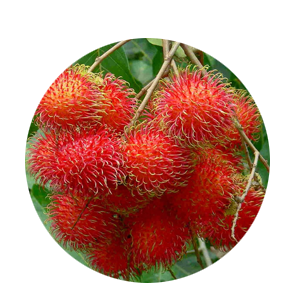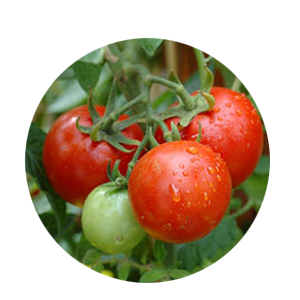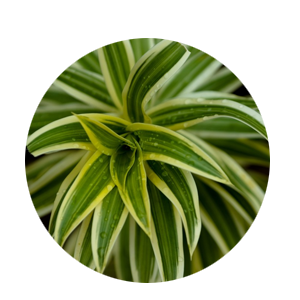Mango - Chakkara - Budded - (8x10 bag)

Item Description
GENERAL INFORMATION ABOUT A MANGO Mangoes are juicy stone fruit from numerous species of tropical trees belonging to the flowering plant genus Mangifera, cultivated mostly for their edible fruit. The majority of these species are found in nature as wild mangoes. The genus belongs to the cashew family Anacardiaceae. Mangoes are native to South Asia, from where the \"common mango\" or \"Indian mango\", Mangifera indica, has been distributed worldwide to become one of the most widely cultivated fruits in the tropics. The ripe fruit varies in size and color. Cultivars are variously yellow, orange, red, or green, and carry a single flat, oblong pit that can be fibrous or hairy on the surface, and which does not separate easily from the pulp. Ripe, unpeeled mangoes give off a distinctive resinous, sweet smell. Inside the pit 1–2 mm (0.039–0.079 in) thick is a thin lining covering a single seed, 4–7 cm (1.6–2.8 in) long. The seed contains the plant embryo. Mangoes have recalcitrant seeds; they do not survive freezing and drying. Mangoes are generally sweet, although the taste and texture of the flesh varies across cultivars; some have a soft, pulpy texture similar to an overripe plum, while others are firmer, like a cantaloupe or avocado, and some may have a fibrous texture. The skin of unripe, pickled, or cooked mango can be consumed, but has the potential to cause contact dermatitis of the lips, gingiva, or tongue in susceptible people. HELTH BENENIFTS OF MANGO Nutritional breakdown of mangoes. One cup of dicedmango contains 100 calories, 1 gram protein, 0.5 grams fat, 25 grams of carbohydrate (23 grams of sugar and 3 grams of fiber), 100% of the daily need for vitamin C, 35% for vitamin A, 20% of folate, 10% of vitamin B-6 and 8% of vitamin K and potassium Here are some health benefits 1. Prevent Cancer 2. Prevent Heart Disease 3. Help Lower Cholesterol 4. May Help Treat Diabetes 5. Promote Healthy Sex 6. Improve Digestion 7. Mango During Pregnancy 8. Aid Weight Loss 9. Help Prevent Asthma 10. Improve Eye Health 11. Promote Brain Health 12. Regulate Blood Pressure 13. Enhance Skin Health 14. Improve Immunity 15. Can Help Treat Kidney Stones 16. Boost Bone Health 17. Might Treat Anemia 18. Help Fight Heat Stroke. 19. Improve Hair Health 20. Might Help Treat Diarrhea
Maintanance, Disease Management And Yielding
MAINTANACE OF THE PLANTATION Once a plantation has been established, the work should not be considered finished. It will be necessary, for example, to protect the plantation against weather, fire, insects and fungi, and animals. A variety of cultural treatments also may be required to meet the purpose of the plantation. FERTILIZING Fertilizer may be a 1:1:1 or 1:2:2 ratio formulation, such as 16-16-16 or 10-20-20 NPK. TREE ESTABLISHMENT. During tree establishment, phosphorus (P) is important for root development. BEARING TREES. Nitrogen (N) and potassium (K) are needed by bearing trees for good yields. In general, bearing mango trees should receive about 1 pound of a complete fertilizer (containing N, P, and K) annually for each inch of trunk diameter measured 4 to 5 feet above ground level. Half of the fertilizer should be applied just before flowering and the rest applied after the crop is harvested. Supplemental N should be applied just before flowering rather than during fall and winter, when vegetative growth flushes rather than flowering occur. WATERING AND WEED CONTROL Young mango trees should be watered regularly until fully established. In dry western climates, water mature trees deeply at least every one or two weeks. Desert gardeners may have to water more frequently. Mulch the soil around the trees to conserve moisture. Weeding is also very important. Remove all weeds 1.5 meter around the plant. PRUNING AND SHAPE OF TREE Developing trees should be trained to eliminate low branches less than 2 feet from the ground, leaving three to four main branches on the trunk at different heights. Pruning of well-formed older trees is usually confined to removal of dead branches. Pruning is preferably done after fruiting, before a growth flush occurs. Pruning can also be done to restrict tree size for small yards or when more than 35 trees per acre are planted. Some delay in flowering can be expected from new growth produced in response to pruning. PEST & DISEASE FOR MANGO TREES Every fruit tree has the future potential for disease and insect damage. Factors such as location and weather will play a part in which issues your tree encounters. If available, disease-resistant trees are the best option for easy care; and for all trees, proper maintenance (such as watering, fertilizing, pruning, spraying, weeding, and fall cleanup) can help keep most insects and diseases at bay. HARVESTING YOUR MANGO The harvest season is usually between June and September, depending on variety. Fruit matures three to five months after flowering.Mangos should be picked before they are fully ripe, at which time they soften and fall. Fruits are usually picked after they develop some red, orange, or yellow color. Mangos will ripen and may be picked when the flesh inside has turned yellow, regardless of exterior color.
- Propogation Method : Budding
- Plant Climate : Sub Tropical, Normal, Hot, Cool, Tropical
- Plant Height : 1-2 feet
- Plant Weight : 3.5kg
- Plant Polybagsize : 8x10
Related Images
- Botanical Name : mangifera Indica
- Malayalam Name : Manga
- English Name : Mango
Mango is rich in fiber, so if you have at least one mango every day
Planting Instructions
PLANT THE RIGHT TREE AT RIGHT PLACE Growing space both above and below ground should be considered when selecting a tree to plant. Too often allowances are not made for the increased size of the tree when it matures. Most problems can be avoided by selecting the proper tree species for the available planting space. GENERAL TIPS 1. Plant at least 6 to 10 meter from main overhead utility wires on street or to your home. 2. Plant at least 7 meter from a building. 3. Plant at least 2 meter from sidewalks, driveways, patios and fences. 4. Plant at least 7 to 15 meter from other large trees. 5. Plant at least 7 meter from small trees. 6. Prioritize your tree planting with the sun’s direction to maximize shade by planting on the southwestern and western sides of your home BASIC PARAMETERS TO PLANT A MANGO TREE 1. Soil : Mango comes up on a wide range of soils from alluvial to laterite provided they are deep (minimum 6\') and well drained. It prefers slightly acidic soils (pH 5.5 to 7.5) 2. Planting Distance : For Commercial Plantation: - The planting distance is 10m. x 10m. and 12m. x 12m. in dry and moist zones respectively. In the model scheme, a spacing of 8m. x 8m. with a population of 63 plants per acre has been considered which was observed to be common in areas covered during a field study. For Home Garden: -In a home garden generally we are planting one or two mango trees along with other species of fruit plants. So it is better to keep minimum 7 meter distance from other plants to plant a mango tree. 3. Pit size : Minimum 60cm width X 60cm Breadth X 60cm depth 4. Sunlight : 100% sunlight is best but can grow up to 50 % shade 5. Watering: During dry weather, initially water the plant once in two days and after one month of planting water every 7 to 10 days during the first year. TEN TIPS FOR PLANTING A MANGO TREE 1. Dig a hole/pit 3 to 4 times wider than the container (Normally 60cm X 60cm X60cm is recommended). Fill the pit with top fertile soil to allow for proper root growth. Avoid clay type soil to refill the pit. 2. Add 250 gm Rock Phosphate or Born Meal and 3 to 5 kg Cow dung or compost in the top soil of the pit and mix it thoroughly (Thorough mixing of manure with soil is very important because direct contact of manure with the roots of the plant will cause the damage of roots and plant). 3. Make a small hole in the pit and carefully remove the plant from the container/pot or poly bag keeping the soil around the roots intact. Don‘t yank the plant out of the pot or poly bag as this can separate the roots from the tree. Poly bags can be easily removed by cutting it by a knife and pots can be removed easily by hitting slightly at the top edge of the pot. 4. Set the plant in the middle of the hole. Avoid planting the tree too deep. Keep the base of the trunk is slightly above ground level. Using some soil, secure the tree in a straight position, then fill and firmly pack the hole with the original soil, making sure there aren‘t any air pockets. 5. If the plant is Grafted or Budded make sure the grafted or budded portion of the plant is above the soil. Do not allow to touch the grafted or budded portion in the soil as it burns the skin of the plant. 6. Create a water-holding basin around the pit and give the plant a good watering. After the water has soaked in, spread protective mulch 2–4 inches deep in a 3-foot diameter area around the base of the tree, but not touching the trunk. Also provide a stich as a support for the plant, if needed. 7. The soil and mulch around your plant should be kept moist but not soggy. During dry weather, initially water the plant once in two days and after one month of planting water every 7 to 10 days during the first year. 8. Remove any tags and labels from the tree as these will affect the tree as it grows. You may need to prune any broken or dead branches. For Budded or Grafted plants it is very important that do not allow the growth of off shoots under the grafted/budded portion. Allow the growth of budded/grafted scions only. 9. Do not use chemical fertilizer or any other chemicals on your newly planted trees. Such products will kill your young trees. If needed you can add chemical fertilizers in small quantity (generally below 100gm) after two to three months of planting with sufficient irrigation. 10. Do not over water or allow rain water so much that you see standing water in the pit area of the plant. It will damage the plants roots and results the die of your plant.

















